Inside Gaza as you have never seen before: Palestinians share footage of people swimming on the beach, shopping at markets and playing football in a rare glimpse of what life was like in the city before October 7
A Palestinian man has given a rare glimpse into what life was like in Gaza before Hamas launched its horrific attack on Israel on October 7.
The images, shared by Palestinian freelance journalist Yousef Alhelou, show how people went about their daily lives in the northern part of the territory before the conflict broke out.
One clip shows adults and children swimming in the sea and playing on the beach, while others show people playing football on an artificial grass pitch, buying fruit at an open-air market and men fishing from a boat in the ocean.
According to Israeli authorities, Israel began bombing the Gaza Strip shortly after Hamas terrorists crossed the border into Israel, killing about 1,200 Israelis and foreigners and taking 240 hostage.
Nearly 15,000 people, mostly civilians and including thousands of children, have been killed in Gaza following the deadliest attack in Israel’s history, according to the Hamas-led government.
You can see children and adults playing in the sea and relaxing on the beach in Gaza
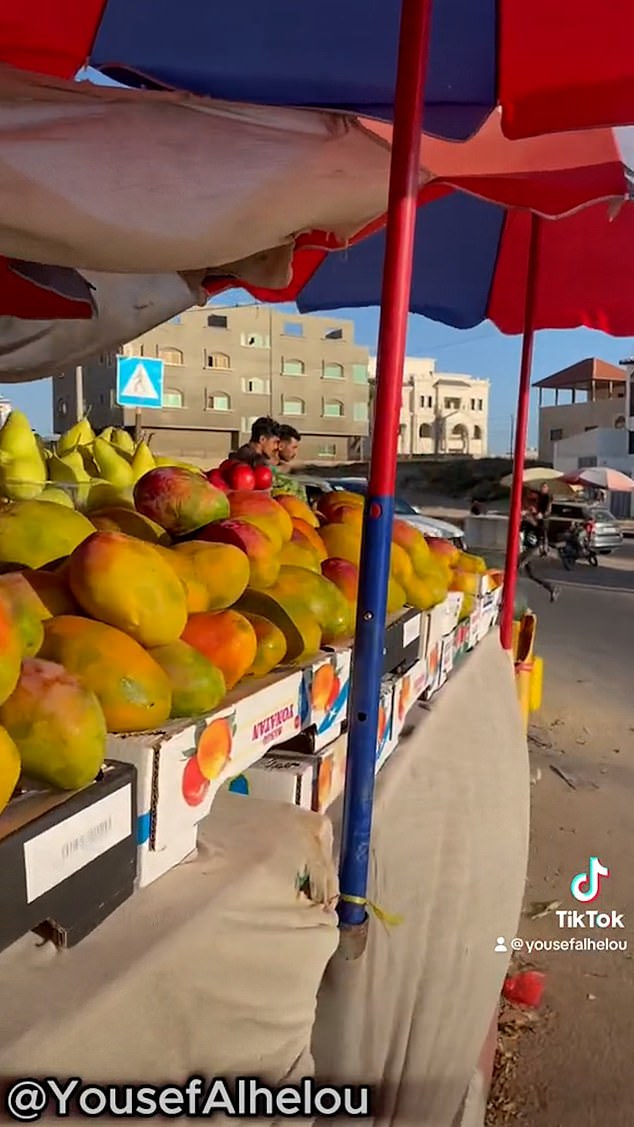
Another shows a market stall selling mangoes, pears and other fruits
The videos were posted on Tik Tok by freelance journalist Yousef Alhelou, who has more than 39,000 followers on the social media platform.
According to the Reuters website, he has worked as a news correspondent and reporter since 2007, providing content for a number of local and international new broadcasters including the BBC, GRN, CBC radio Canada and TV New Zealand.
It adds that he is and is a UN fellow ‘one of the well-known journalists in Gaza’, where he has covered topics such as art, sports and humanitarian issues.
Yousef has covered the conflict for a number of years, including major events over the past decade such as Israel’s two wars against Gaza in late 2008 and late 2012.
He also manages the Gaza TV News page on Facebook, which has approximately 396,000 followers.
Yousef has been posting on Tik Tok since January 2021 and many of his videos are shot in London.
The compilation of the clips from Gaza was shared on X, formerly Twitter, by London-based journalist Ahmed Alnaouq.
Ahmed recently appeared on Good Morning Britain, where he spoke about how he lost 21 members of his family in one week after their home was bombed in the war-torn Gaza Strip.
This included his father, two brothers, three sisters, sister-in-law and 14 nieces and nephews.
Ahmed told how his family moved to his home in Gaza because they thought it would be safer than their own home.
They were asleep in the early morning of October 22 when the bombs hit, with only two of his relatives surviving. One of them later succumbed to his injuries.
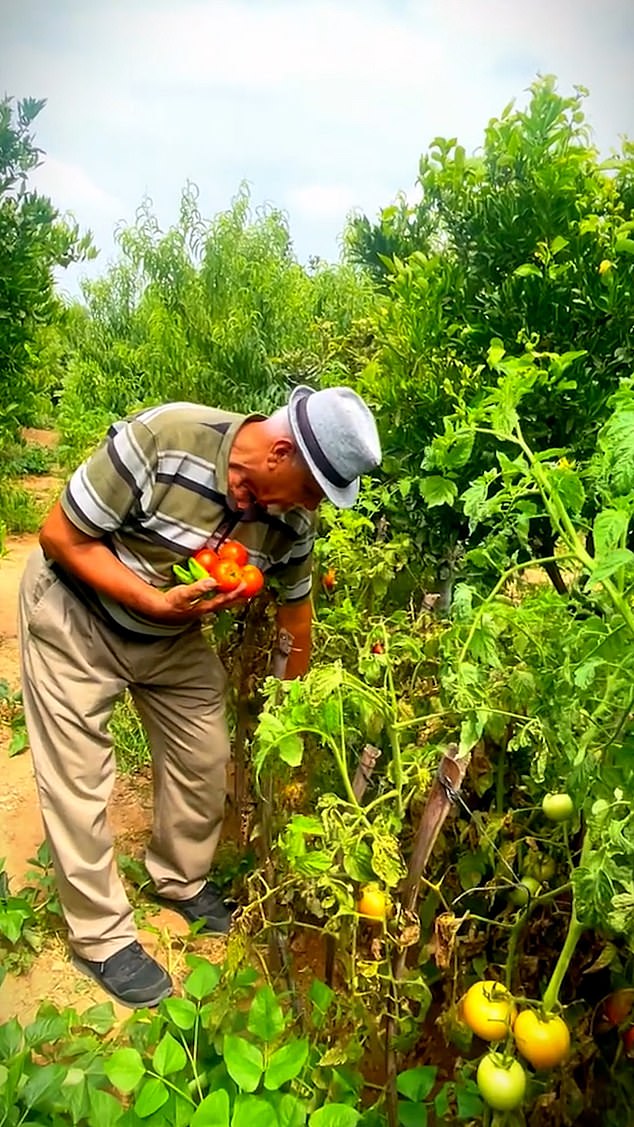
One clip shows a man picking tomatoes from a farm in Gaza
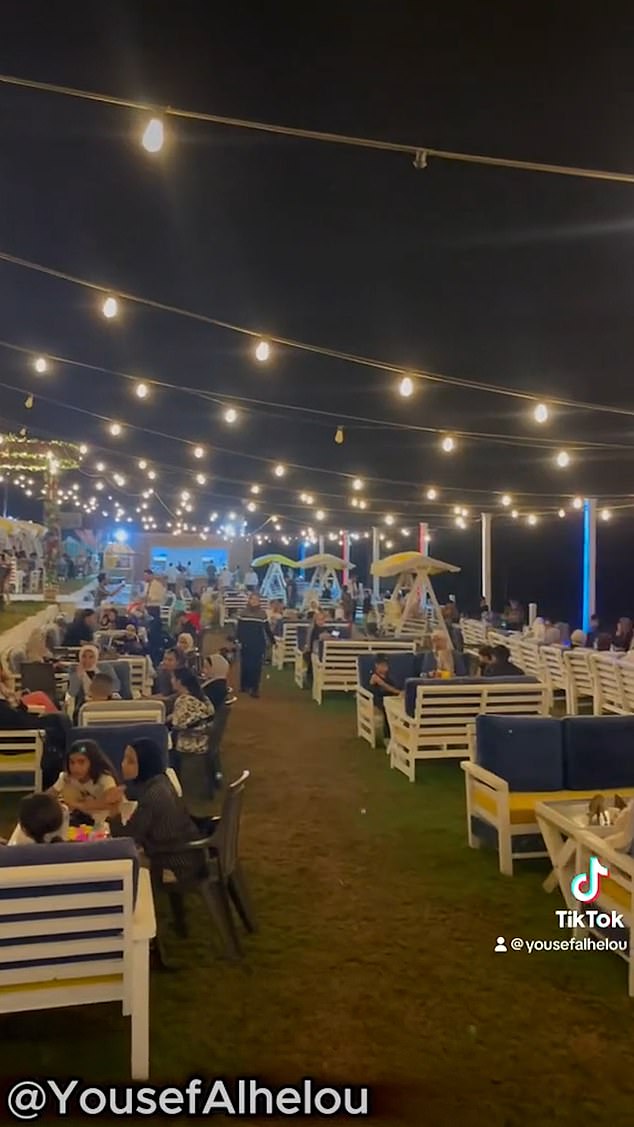
Another clip shows people sitting and eating in an outdoor seating area in the evening
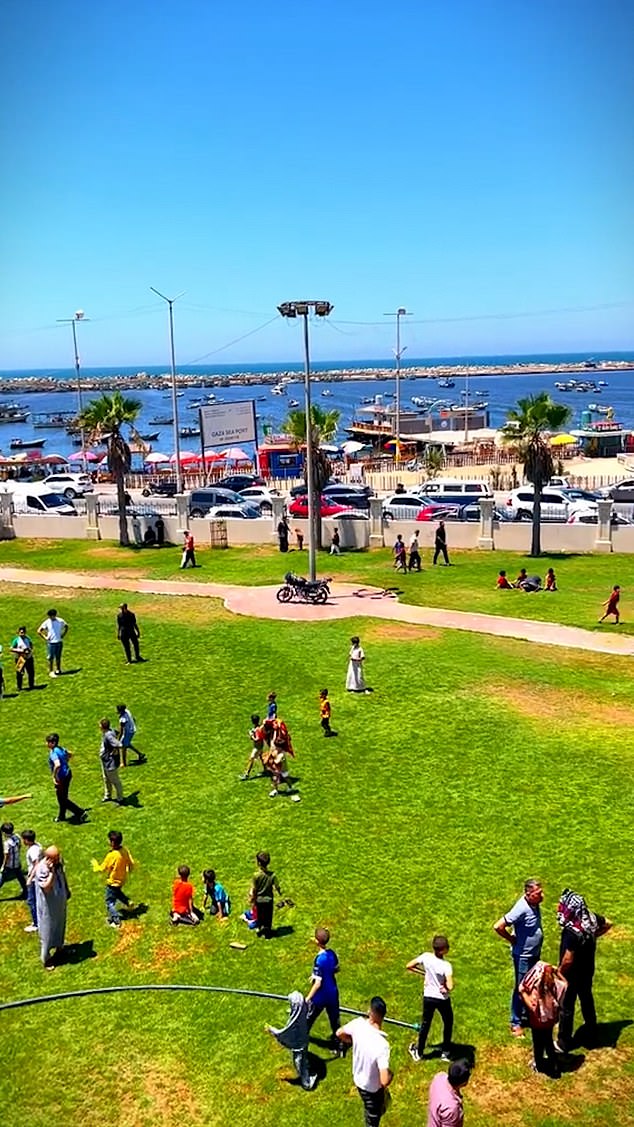
In one clip, children and their parents can be seen soaking up the sun as they gather in a seaside park

A boy and a girl ride a camel on the beach in Gaza before the October 7 attacks
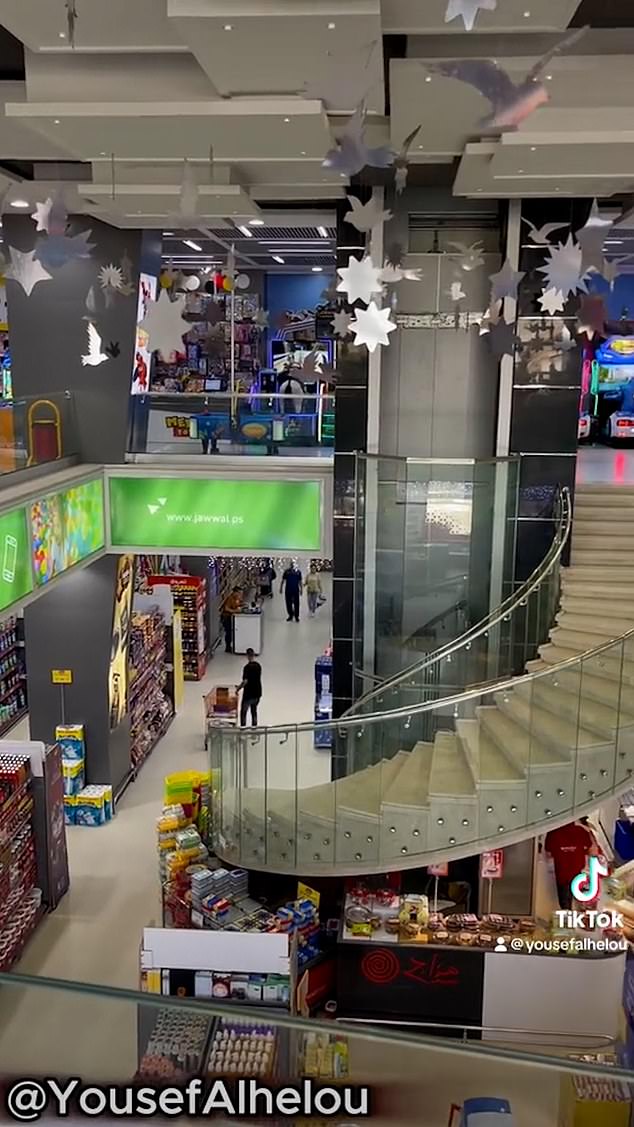
A busy mall in Gaza where people can be seen shopping downstairs, while video games can be seen in the background on the floor above
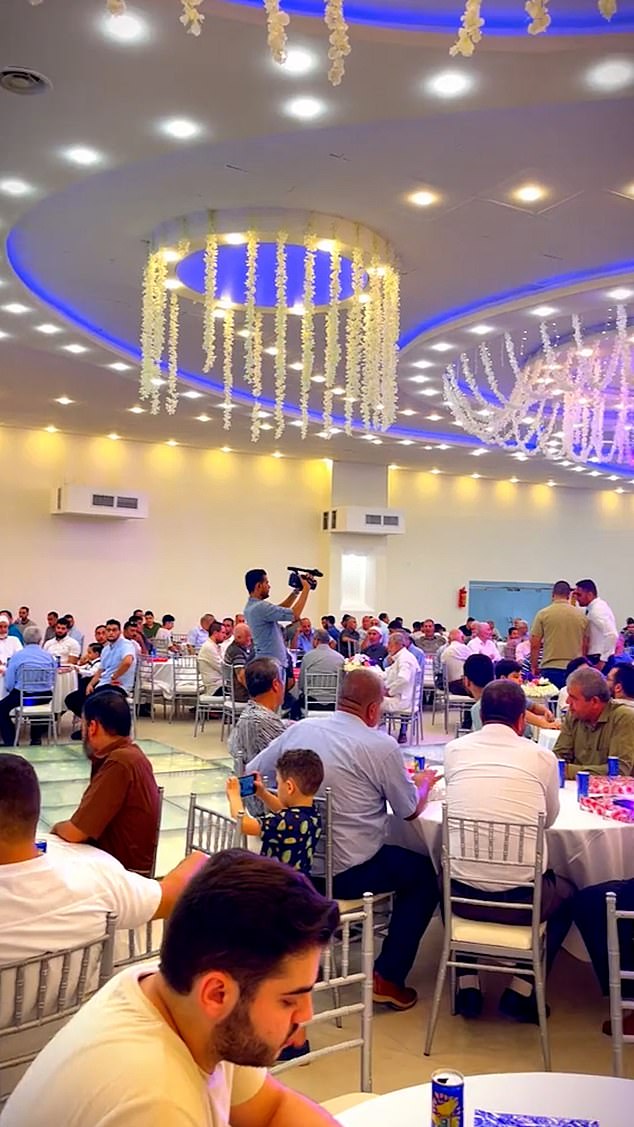
A large gathering of people for what appears to be some kind of party in a Gaza dining hall
The United Nations said on Saturday that 61 trucks carrying medical supplies, food and water had delivered their loads to northern Gaza, as a lull in fighting allows aid to enter the besieged coastal area.
Another 200 trucks had been sent from Nitzana, Israel, to the Gaza Strip, the UN Office for the Coordination of Humanitarian Affairs (OCHA) said in a statement, with 187 crossing the border by early evening local time.
Eleven ambulances, three coaches and a low-loader were delivered to Al-Shifa hospital, where heavy fighting has occurred in recent days, “to assist with evacuations,” the statement said.
“The longer the pause lasts, the more humanitarian aid organizations will be able to send into and through Gaza,” it added, thanking the Palestinian and Egyptian Red Crescent groups.
The day before, as a temporary ceasefire began between Israel and Hamas to facilitate the exchange of hostages and prisoners, a total of 137 trucks had delivered aid to Gaza, according to the UN.
Hamas militants released 17 hostages, including 13 Israelis, from captivity in the Gaza Strip on Saturday, while Israel released 39 Palestinian prisoners.
The overnight exchange was postponed for several hours after Hamas accused Israel of violating the agreement.
The delay underscored the fragility of the ceasefire, which has halted a war that has shocked Israel, caused widespread destruction in the Gaza Strip and sparked wider fighting across the region.
“Today we welcome the release of more hostages and renew our call for the immediate and unconditional release of all hostages,” the OCHA said.
“And we hope that the release of more Palestinian prisoners will bring relief to their families and loved ones.”
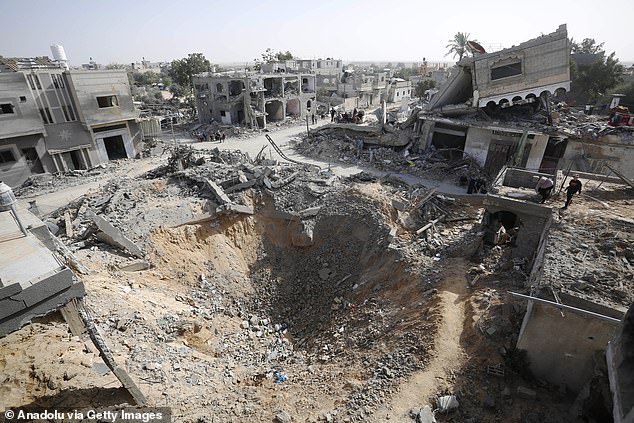
An aerial view of the wreckage of residential areas following Israeli attacks during the third day of the humanitarian pause in Khan Yunis
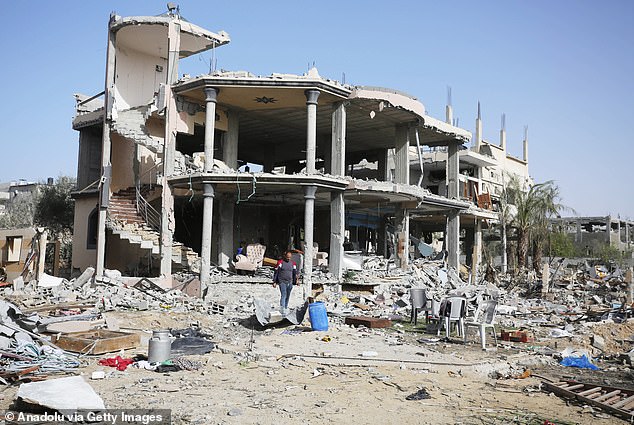
A look at the wreckage of buildings after Israeli attacks during the third day of the humanitarian pause in Khan Yunis
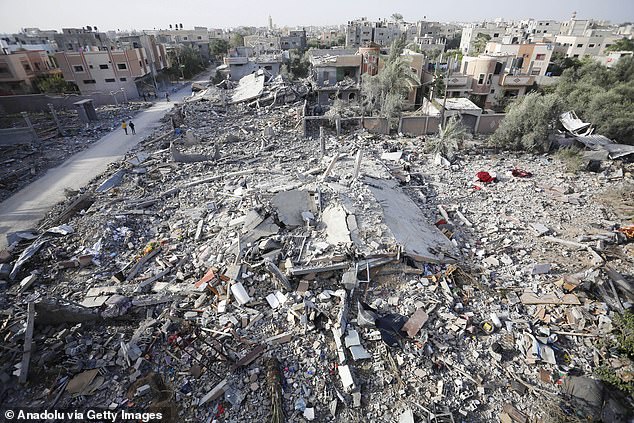
An aerial view of building wreckage following Israeli attacks during the third day of the humanitarian pause in Khan Yunis
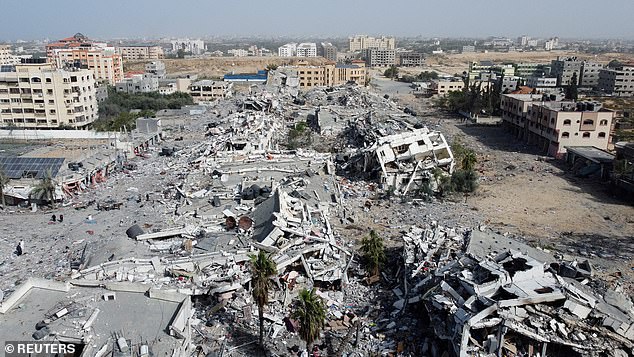
Residential buildings destroyed in Israeli attacks during the conflict amid a temporary ceasefire between Israel and the Palestinian Islamist group Hamas, in southern Gaza City
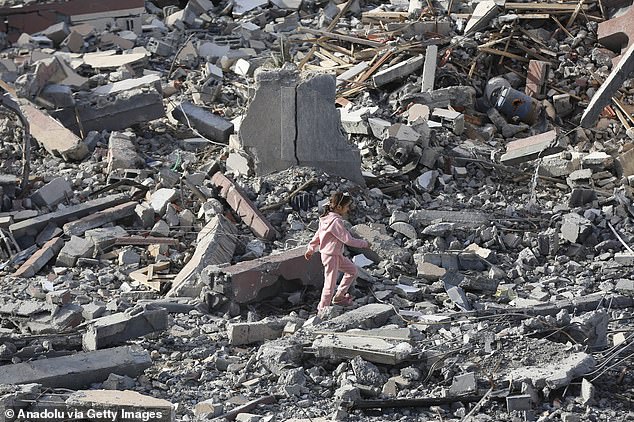
A Palestinian girl tries to walk among the wreckage of buildings after Israeli attacks during the third day of the humanitarian pause in Khan Yunis
The ceasefire, brokered by Qatar and the United States, is the first extended break in fighting since the war began on October 7. In total, Hamas must release at least 50 Israeli hostages and Israel 150 Palestinian prisoners. They are all women and minors.
Israel has said the ceasefire could be extended by an additional day for every 10 additional hostages freed, but has vowed to quickly resume its offensive and achieve its objectives of returning all hostages and destroying Hamas’ military and administrative capabilities .
Thousands of people gathered in central Tel Aviv on Saturday in solidarity with the hostages and their families.
The exchanges continued into early Sunday local time, with Hamas expected to free a total of 50 hostages during the four-day ceasefire in exchange for 150 Palestinian prisoners, under a deal brokered by Qatar, Egypt and the United States.
